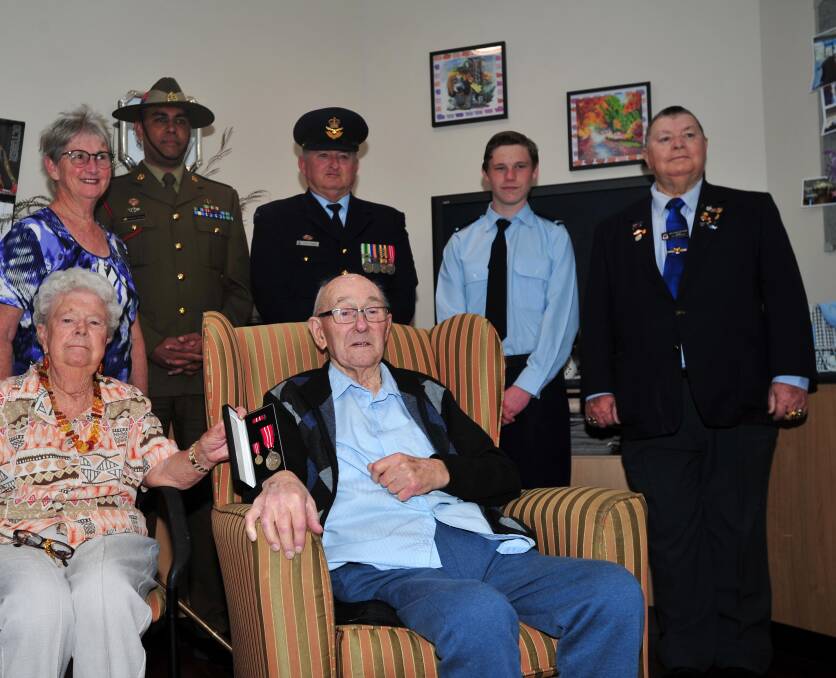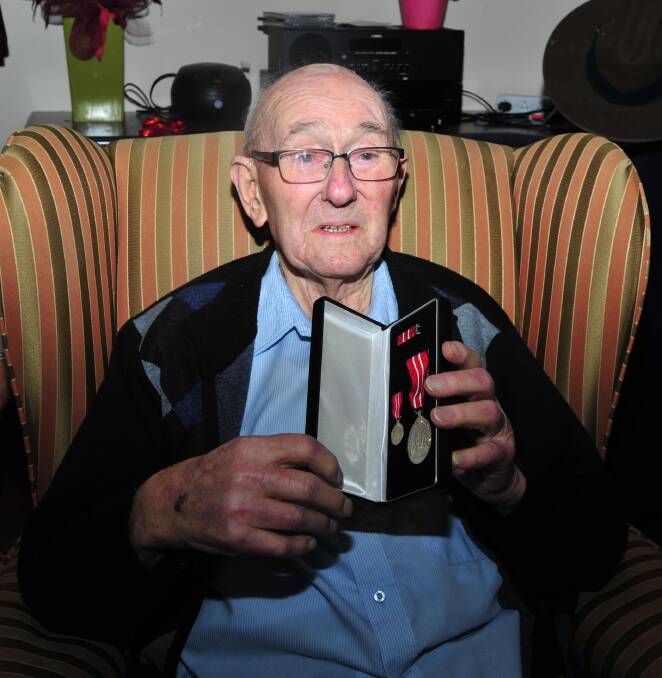
Hours before the plane was to leave for Japan in 1946, Roger Quine was notified he would not be on it.
Subscribe now for unlimited access.
$0/
(min cost $0)
or signup to continue reading
As a member of the British Commonwealth Occupation Force, he was slated to join the rebuilding efforts after the atomic bombs had flattened Hiroshima and Nagasaki.
But a reaction to the smallpox injection prevented his departure.
“I was terribly disappointed some of us had to stay behind. We missed [seeing] the move out because we were all in hospital,” said Mr Quine.
“When I enlisted, it was the thing you did back then, but I always wanted to be in the forces.”
He served two years as a signal operator in Melbourne, channeling lines from Japan to Australia.
Related:
The 90-year-old has spent the past five months suffering a mystery illness that has kept him confined to a room in Junee’s District Hospital.
But when his wife, Fay, brought him into the dining room on October 31, he was met with the unexpected.
Now 72 years after he commenced his service to the nation, Mr Quine received his Australian Defence Medal. Major Roderick Narayan travelled from Canberra to personally deliver the medallion.
A small ceremony was was attended by family, including Mr Quine’s grandson, Tahi Davis, himself an airforce cadet.

It was the culmination of 50 years work conducted by Mrs Quine along with Junee RSL sub branch’s Ross Reid and Peter Hogarth.
“I don’t think I can put it into words [how much the medal means], he started it all so long ago,” said Mrs Quine.
“Today has been one of the best days of my life.”
The ribbon attached to the war medallion has three colours.
The black and red denote the Flanders poppy, the symbol of the Anzac spirit.
The white divides the red into three, representing the place of the army, navy and airforce.
Mr Quine enlisted into the Australian Defence Force on 21 June 1946.
He has waited for more than 50 years to see those colours.
“I joined the army to do something for my country. It’s lovely to have had it recognised,” said Mr Quine.

